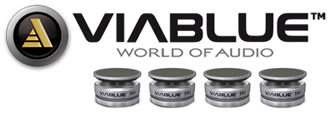New Customer?
Create your accountNo products
Prices are tax included
By buying this product you get 69 loyalty points
Audiophonics EVO-Touch
Streamer piCorePlayer Balanced DAC 2x ES9038Q2M 32bit 768kHz DoP256
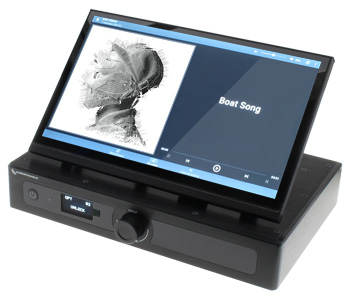
The Audiophonics EVO-Touch is a high-performance network player and balanced DAC combo, based on a pair of ES9038Q2M digital-to-analog conversion chips and a Raspberry Pi 4 SBC, enabling you to enjoy your music both via integration into a conventional audio system and from access to your favorite network devices or streaming services. In conjunction with piCorePlayer and LMS, a large touch screen provides a clear graphical interface for controlling music playback and displaying information thanks to the Material Skin plugin.
EVO-Sabre audio circuit
The EVO-Sabre is a high-precision DAC powered by two integrated ES9038Q2M Sabre 32bit chips in dual-mono mode: each of these chips dedicates 100% of its computing power to a single channel of the stereo signal, for exceptionally clear reproduction with rigorously controlled crosstalk.
This component is one of ESS's flagship products, and belongs to today's best hardware solutions for high-fidelity audio decoding, notably with the famous Hyperstream 32bit 768kHz architecture. These chips also feature advanced reconstruction filters and excellent dithering finesse.
ESS technology is also very popular, providing extremely precise volume control that respects the digital signal.
The card therefore operates in both balanced and single-ended modes, offering both a balanced stereo output on 3-pin XLR connectors and an unbalanced stereo output on RCA connectors. The module is thus ideally suited to most integration scenarios, and will easily find its place in minimalist audio installations as well as in more complex hi-fi systems.
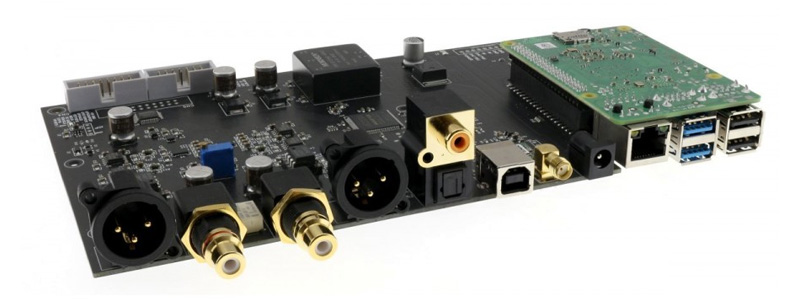
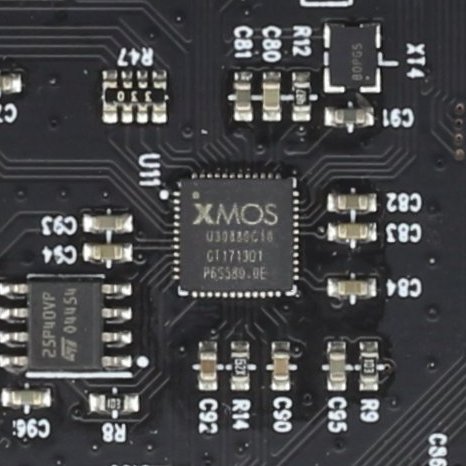
XMOS U208 USB interface
The USB-B input operates via an XMOS U208 USB interface. This is a tried-and-tested reference component in the world of high-fidelity music, supporting digital streams up to 32bit 768kHz with DSD support.
Definitely high-resolution-oriented, this asynchronous USB interface boasts a 1000MIPS computing capacity completely dedicated to digital audio signal processing, with minimal jitter and noise.
When the EVO-Sabre DAC is used in conjunction with a Raspberry Pi, as is the case with this EVO-Touch, the high-definition USB input enables immediate interfacing of digital audio streams to RPI I2S up to 384kHz / DoP128.
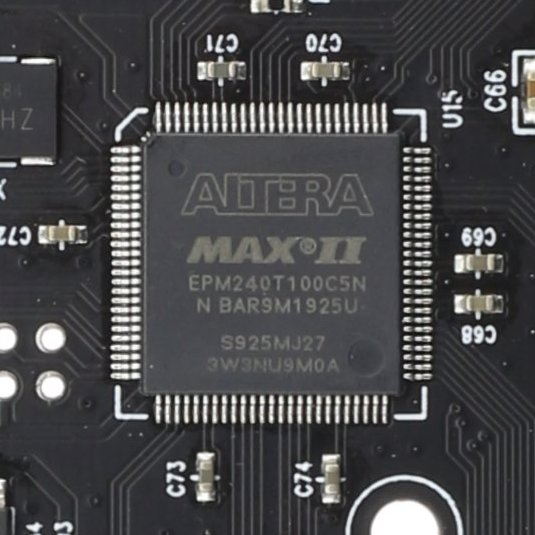
Altera Max FPGA
Unlike its predecessors, the EVO-Sabre has several inputs managed by an independent interface. SPDIF signals are handled by an Altera Max FPGA capable of cleanly processing the digital input streams. These streams are interfaced in I2S to each of the two DAC chips, which represents a significant gain in performance over previous generations. SPDIF inputs accept PCM signals up to 24bit 192kHz, as well as DSD streams up to DoP128.
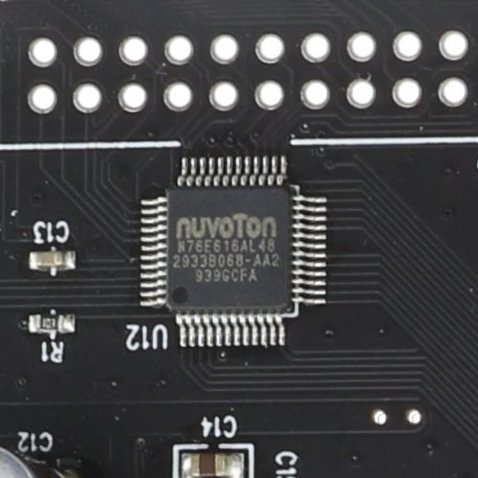
Auto-configuration by microcontroller
Thanks to a built-in microprocessor, the EVO-Sabre is able to automatically detect the format and sampling rate of the source, and automatically adapt to provide the best listening performance immediately, without requiring any intervention on the part of the user.
This CPLD chip control maintains high stability while preventing decoding problems and listening artifacts.
What's more, it lets you play back playlists comprising a wide variety of file types without having to worry about reconfiguring the DAC regularly for optimum audio quality.
A customized feeder stage
Powered via a DC 12V jack connector, the EVO-Touch operates from a robust, silent power supply stage to ensure a stable signal while limiting residual noise. To achieve this, the PCB incorporates a Mornsun DC/DC converter, followed by two 79M08 / 78M08 voltage regulators dedicated to the analog part, supplied at +/-8V.
The board has a separate 5V power supply dedicated to the Raspberry Pi. In this scenario, the RPI is powered directly via its GPIO port, avoiding the need for multiple connections and cables. The whole system remains simple and straightforward in all its configurations.
The module also features ultra-low-noise voltage regulators dedicated to the converter stage, to isolate the DACs from the main power supply.
The DVCC voltage is generated from an LP5907 (regulation < 6.5µV), which generates the DAC's critical Vref 1.2V. AVCC voltage is generated from a dedicated ADP150 regulator (regulation < 9µV).

A large Full HD LCD screen
A special feature of the EVO-Touch is the integration - in addition to the front panel display - of a large Full HD LCD touchscreen. Combined with piCorePlayer's ergonomic material interface, this makes it easy to control your music. It also displays all essential playback information, while providing access to Squeezelite's many functions and settings. A virtual azerty / qwerty keyboard also lets you search your music library.
The LCD screen does not allow you to control the DAC's functions. It only controls the Raspberry Pi and therefore Squeezelite / LMS. To access the DAC's parameters (source, filters), you need to use either the remote control or the buttons on the front panel.
The device should always be switched off using the remote control's Power button, not the front panel button.
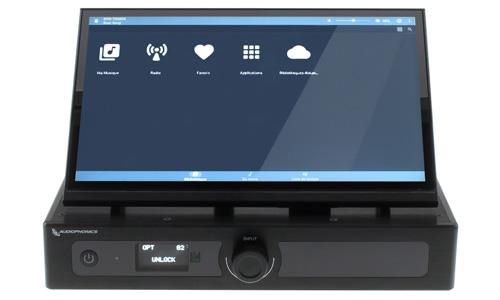
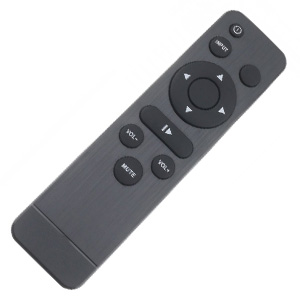
IR remote control
The EVO-Touch is also equipped with an infrared receiver, communicating both with the microcontroller in charge of driving the DAC chips and with the Raspberry Pi. The supplied remote control centralizes most of the playback functions for maximum ease of use. Input selection, volume and standby functions, as well as filter settings, are handled by the on-board microcontroller, while playback functions are transferred to the Raspberry Pi.
piCorePlayer & LMS
The EVO-Touch works in conjunction with a software layer using the piCorePlayer system, itself based on LMS (Logitech Media Server) and Squeezelite. This integration gives you a true network player, both sonically powerful and extremely versatile. You can enjoy music stored on your network devices (NAS, computers, etc.), as well as numerous streaming services and web radios via plugins: Spotify, Qobuz... A simplified graphic interface, here displayed on the large LCD screen, offers easy control of playback.
Comprehensive connectivity
In addition to its WiFi and Bluetooth connectivity, the EVO-Touch offers a full range of physical connectors, enabling numerous integration scenarios. Outputs include balanced XLR and unbalanced RCA. Next come the DAC's digital inputs, with coaxial, optical and USB-B (USB Audio). Finally, the Raspberry Pi's connectivity is also directly accessible, with its RJ45 Ethernet port, four USB-A ports and Micro SD slot (dedicated to the operating system).
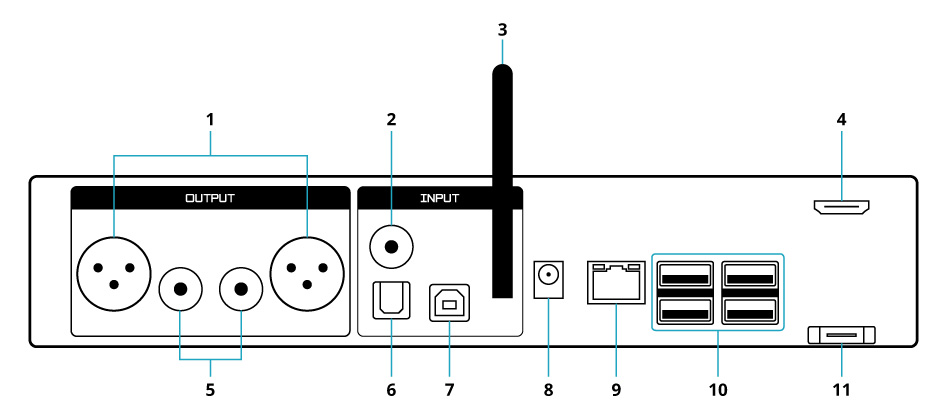
| 1 | Balanced XLR output |
| 2 | Coaxial input |
| 3 | Bluetooth / WiFi antenna |
| 4 | HDMI output |
| 5 | Single-ended RCA output |
| 6 | Optical input |
| 7 | USB-B input (USB Audio) |
| 8 | Power input |
| 9 | RJ45 port |
| 10 | USB-A ports |
| 11 | Micro SD slot |
Aluminum enclosure
The whole unit is housed in a sturdy aluminum case, both sober and modern. This chassis efficiently houses the various components. The overhanging LCD screen is angled at 45° for easy, convenient touch control.
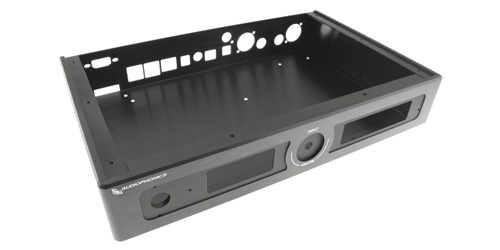
Technical characteristics
| Specifications | |
|---|---|
| Product type | Streamer and balanced DAC |
| DAC chi^ps | 2* ESS ES9038Q2M |
| USB interface | XMOS U208 |
| FPGA | Altera Max II |
| Architecture | Balanced |
| Audio inputs | 1* Coaxial 1* Optical 1* USB-B (XMOS) Bluetooth |
| Audio outputs | 1* Single-ended stereo RCA (2Vrms) 1* Balanced stereo XLR (4Vrms) |
| Supported sampling rates | USB: PCM up to 32bit 768kHz, DSD up to DoP256 RPI I2S: PCM up to 32bit 384kHz, DSD up to DoP128 SPDIF: PCM up to 24bit 192kHz, DSD DoP64 |
| Touchscreen | LCD Full HD 11.6" |
| Total screen dimensions | 27.4 x 16.9cm |
| General | |
|---|---|
| Supply voltage | 12VDC on Jack DC connector |
| Housing material | Aluminum |
| Dimensions | 300*221*182mm |
| Weight | 2.4kg |
| Color | Black |
| Package | 1* Audiophonics EVO-Touch 1* Power supply 1* Remote control 1* Antenna 1* 16GB micro SD Card with pre-installed OS |
| Input | SPDIF |
| Input | Bluetooth |
| Input | USB |
| Input | Optical |
| Output | XLR |
| Output | RCA |
| DAC / ADC Chip | ES9028Q2M |
| Max sampling rate | 384kHz |
| Max sampling rate | 768kHz |
| Color | Black |
| Networking | Yes |
| Remote Control | Yes |
| Streaming services & Network protocols | Qobuz |
| Streaming services & Network protocols | Web radios |
| Streaming services & Network protocols | AirPlay |
| Streaming services & Network protocols | Tidal Connect |
| Streaming services & Network protocols | Spotify |
| Streaming services & Network protocols | Tidal |
| Streaming services & Network protocols | DLNA |
| Streaming services & Network protocols | Spotify Connect |
No reviews at this time.


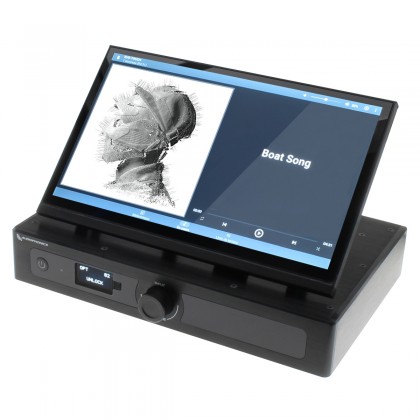





![[GRADE S] SHANLING M5 ULTRA Digital Audio Player DAP Black](https://www.audiophonics.fr/62540-thumb_default/shanling-m5-ultra-black.jpg)
![[GRADE S] FIIO KA2 LIGHTNING Portable DAC Headphone Amplifier 2x CS43131 32bit 384kHz DSD256](https://www.audiophonics.fr/61299-thumb_default/fiio-ka2-lightning-portable-dac-headphone-amplifier-2x-cs43131-32bit-384khz-dsd256.jpg)
![[GRADE S] TOPPING DX7 PRO Balanced DAC Headphone Amplifier ES9038Pro Bluetooth 5.0 aptX HD LDAC 32bit 768kHz DSD1024 Black](https://www.audiophonics.fr/47119-thumb_default/-grade-s-topping-dx7-pro-balanced-dac-headphone-amplifier-es9038pro-bluetooth-50-aptx-hd-ldac-32bit-768khz-dsd1024-black.jpg)
![[GRADE S] GUSTARD C18 Master Clock OCXO 10MHz Silver](https://www.audiophonics.fr/67112-thumb_default/gustard-c18-master-clock-ocxo-10mhz-silver-stockb.jpg)
![[GRADE B] DAYTON AUDIO SD270A-88 Speaker Driver Subwoofer DVC 80W 4 Ohm 88dB 26Hz-2000Hz Ø25.4cm](https://www.audiophonics.fr/67029-thumb_default/dayton-audio-sd215a-88.jpg)

















